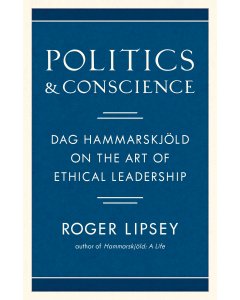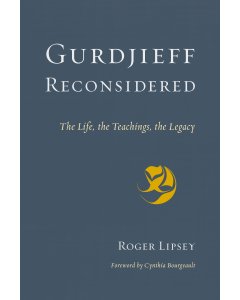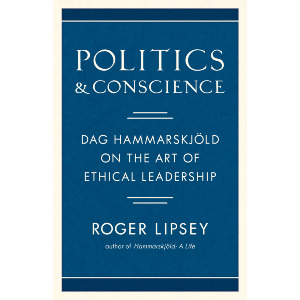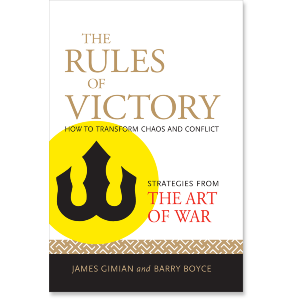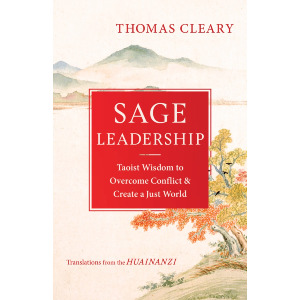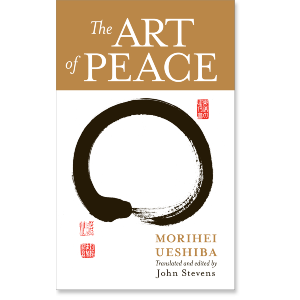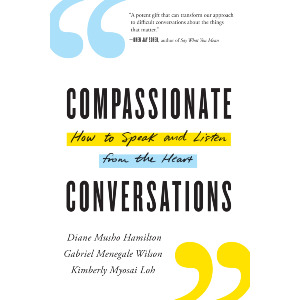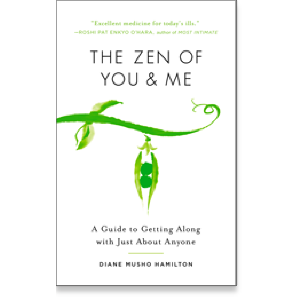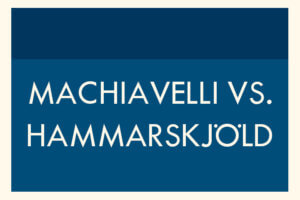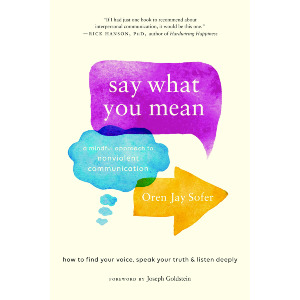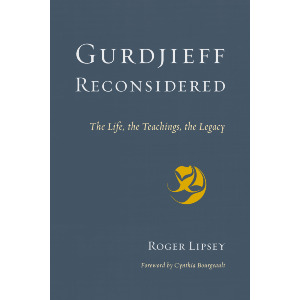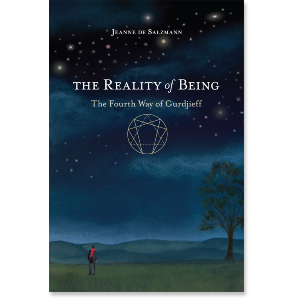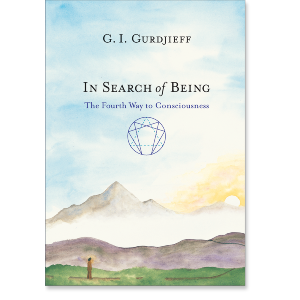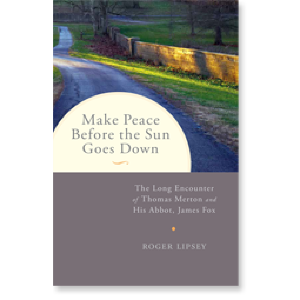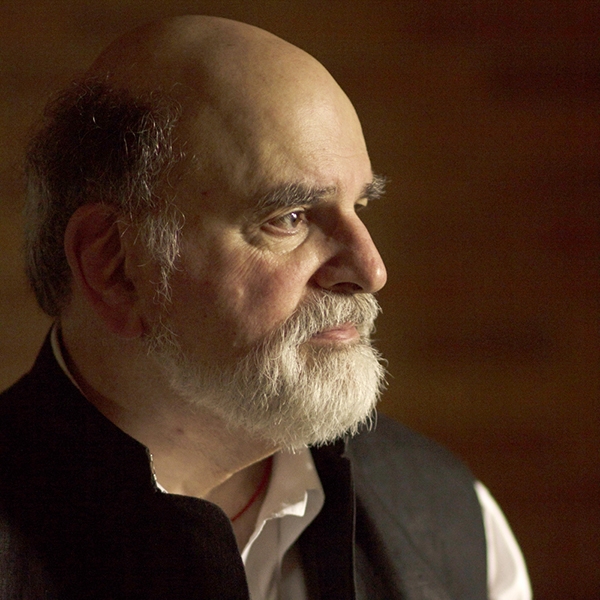

Roger Lipsey
Roger Lipsey is a biographer, art historian, editor, and translator. He is the author of An Art of Our Own: The Spiritual in Twentieth-Century Art; Angelic Mistakes: The Art of Thomas Merton; Hammarskjöld: A Life, hailed as the definitive Dag Hammarskjöld biography; and most recently Gurdjieff Reconsidered: The Life, the Teachings, the Legacy.
Roger Lipsey
GUIDES

Two Vital Books for Our Era of Polarization

It will come as little surprise to you that we are not publishers of political tracts. Yet, in this era of polarization, in the U.S. we approach a fraught election season and across the world we are seeing shifts across the political spectrum that are characterized by visions of the past, present, and future which can be deeply concerning, depart from objective truth, and whose motivations and goals are often murky. In many ways these political crises we see around us are rooted in a collective spiritual crisis, and this is very much in the center of our publishing wheelhouse.
With this in mind, we wanted to share two relatively recent and vitally important books that have a lot to say about present visions of leadership and a realignment of our societies that serve as models to appreciate, reflect on, and explore. Neither are political treatises per se. Yet they both point to a way forward for all of us that is positive and hopeful.

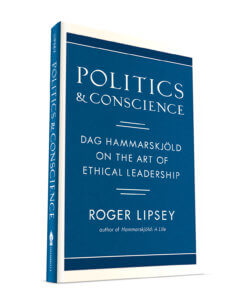
As readers of his now-classic diary, Markings, are aware, Hammarskjöld understood political leadership as an honor calling for resourcefulness, humility, moral clarity, and spiritual reflection.
In this accessible handbook, acclaimed biographer Roger Lipsey details the political and personal code by which Hammarskjöld lived and made critical decisions. What emerges is the portrait of a man who struck a remarkable balance between patience and action, empathy and reserve, policy and people. Structured through short sections on themes such as courage, facing facts, and negotiation, Politics and Conscience offers a vision of ethical leadership as relevant today as it was in Hammarskjöld’s time.
As the author writes,
“Hammarskjöld was a breakthrough. His thought and conduct in office represented a profound and needed renewal. He was an example for all who care for enlightened, courageous politics in the public interest. There is so much to understand from him. But he need not be taken as a model. There is a difference between appreciation and imitation. Appreciation leads one to find one’s own, to honor the example without undertaking the impossible and needless task of being and doing as he or she was and did. The classic question still asked by some at the UN — What would Dag do? — is an invitation to reflect, not to imitate.”

“if we are going to come anywhere close to ending the disasters of . . . a society defined by its culture wars . . . a society of ethnocentric enthusiasms claiming ultimate value, a culture wracked by indecision anchored in post-truth confusion, a society where fully half of its members hate the other half—then we are going to have to move from a culture of no-truth to a . . . deliberately developmental culture.”
It is this developmental culture and how each of us can contribute to building it within our communities and society that this book describes in rich detail.
We hope both of these books inspire you.
More Books for an Era of Polarization
$16.95 - Paperback
By: Diane Musho Hamilton & Kimberly Myosai Loh & Gabriel Menegale Wilson
$19.95 - Digital Audio
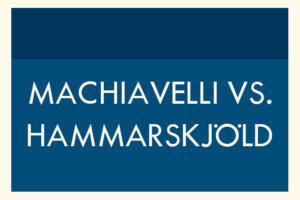
Commentary on
Politics and Conscience:
Dag Hammarskjöld on the Art of Ethical Leadership
by Roger Lipsey
We have all become connoisseurs of leadership. Unintentionally, inescapably. This was already so in the pre-pandemic years of the Trump administration. However you assess those years, they were a civics lesson: checks and balances once taken for granted now visible, Constitutional requirements once respected now defied, the role of the US attorney general, and not least, the role of state governors, once minor now major. It has been a rumble. But our new citizen’s grasp of the design of government and the perils of misgovernment has changed several generations’ understanding and participation in political life. Hard earned, invaluable.
I published Politics and Conscience: Dag Hammarskjöld on the Art of Ethical Leadershipin February 2020, when we still didn’t firmly know that a deadly pandemic was poised to change nearly everything. I had certain ideas in mind for this compact handbook. Its broad aim was to bring political wisdom to the turmoil of American politics from a somewhat overlooked but truly grand source. Hammarskjöld was the second secretary-general of the United Nations (1953–1961), still honored as the foremost individual to have occupied that post. He could reach us, of this I was certain. His knowledge, attitudes, and language were as fresh as ever; no fading. He possessed practical, inspiring wisdom, grounded in his vast experience as the leading international statesman in a troubled, dangerous era. Further, he knew how to reflect his experience into the public space through press conferences, interventions at UN meetings, and addresses at universities and other institutions across the United States and worldwide. His posthumously published journal, Markings, added no end of dimension to what we already knew of him.
I think of him as the response, delayed by centuries, to the fiery brilliance of Machiavelli. Hammarskjöld’s is another fiery brilliance, no less realistic and passionate but dedicated to humanity—to the welfare and progress of all rather than the ascendancy of one dominant figure. Politics and Conscience is an exploration of modern leadership at its best, very much in Hammarskjöld’s spirit and often in his words. “It is difficult to hear the low voice of reason or see the clear little light of decency,” he wrote to a diplomatic friend, “but both endure and both remain perfectly safe guides.”
Politics and Conscience is very like Machiavelli’s classic guide, The Prince. Both are handbooks, both intended to be put to use. But they are opposite in color. With unforgettable lucidity, Machiavelli teaches his prince to attain and hold power, to dispose of enemies ruthlessly, to make war and preparation for war his central study. The prince “should not deviate from what is good,” he advises, “if that is possible; but he should know how to do evil, if that is necessary.” Elsewhere: “When he seizes a state the new ruler must determine all the injuries that he will need to inflict. He must inflict them once for all.” Machiavelli travels step by step over the terrain of coercive statecraft, of armed self-interest. The Prince shines with a dark light. It is never an error to read or reread it. Naturally, Hammarskjöld knew it thoroughly. “Even the much decried principles of Machiavelli can from time to time give us useful lessons,” he said in a cordial toast to the prime minister of Italy, “because they teach us to recognize and measure our illusions, and that is a discipline we can hardly neglect in the midst of the dangers of the atomic age.”
Hammarskjöld is Machiavelli’s equal in clarity and eloquence. Their aims differ. Throughout his years, more than eight, at the top of world affairs, he sought to give “peace and reason,” as he once put it, their greatest chance. He was as firm and resourceful in that direction as Machiavelli in urging his prince to secure and hold power. He was as adroit as Machiavelli’s prince, no less bold, but a servant of the good.
Hammarskjöld often said, “Fate is what we make it,” and our shared fate depends on our responses to the facts of our time. “No lasting success is possible,” he once said, “without the courage and the patience to face facts, any more than it is possible without the faith that mankind will reach its goal if we, every one in his own place, are willing to pay the price.” Goodness and pleasant values are not enough: “Even with the best of men half-hearted and timid measures will lead nowhere. The dynamic forces of history will overtake us unless we are willing to think in categories on a level with the problem.” And then, timing matters enormously. His experienced view offers a strong lesson for our moment and leaders. “I feel that when a danger does exist,” he said at a spring 1955 press conference, “we should act on the basis of that very fact that there is a danger and not give ourselves any leeway as to false speculations that the danger is far off in time; that is to say, whatever your guesses are concerning the time of certain possible threatening developments, you should act as if things might happen tomorrow.”
Hammarskjöld was a man of unshakeable integrity—and shrewd. He didn’t mind that word and quality, provided that it served just aims. Like Machiavelli, he had sufficient breadth of mind to survey the overall situation of humanity no less than to examine specifics. Politics and Conscience is a handbook of specific issues to care about, to reflect on and bring into one’s practice as a leader. For example, about the need for dialogue: “Dialogue is badly needed,” he once said, “but dialogue requires quite a few things: objectivity, a willingness to listen, and considerable restraint. Those are all human qualities. No one of them is very remarkable, but they are all called for.”
Hammarskjöld and Machiavelli differ also in their attention to the inner life of leaders. For Hammarskjöld, the identity of leaders—their internal sense of themselves and their values, their unseen but felt struggle to be truly of service—determines much that occurs for good or ill in the world at large. Machiavelli’s prince is something like a statue—powerful, rigid; his weight falls on his enemies. Hammarskjöld’s man or woman of good will and long political experience is mobile, principled, ready to immerse, to feel, to know: to lead wisely from within the human community, sharing hopes and sorrows.
Consider reading The Prince and Politics and Conscience side by side. The tensions and evolution of Western political experience will be brightly evident. They offer a choice that needs to be made again and again.
Share
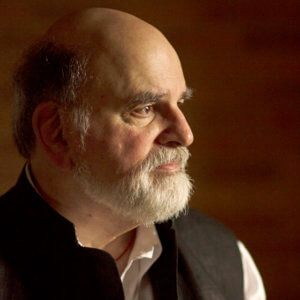
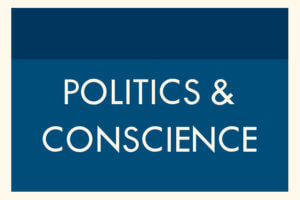
Purposeful Communication & Negotiation
An Excerpt from Politics and Conscience
Hammarskjöld cared about nothing so much as dialogue and its formal version, negotiation. It was the heart of his activity as secretary-general, and the hum of purposeful dialogue is needed throughout the world if we are to find our way.
From his perspective, dialogue isn’t day-to-day conversation; it calls for modest but definite discipline.
“I do believe,” he said in 1960, “that . . . dialogue is badly needed, but dialogue requires quite a few things: objectivity, a willingness to listen, and considerable restraint. Those are all human qualities. No one of them is very remarkable, but they are all called for.” Quite touchingly, some part of Hammarskjöld’s emphasis on dialogue came itself from dialogue: on the printed page with certain essays by Albert Camus, the French Nobel laureate, and in direct conversation with Martin Buber, the elderly Israeli religious philosopher and social thinker with whom he developed a remarkable rapport.
Though I can’t be sure of what he especially valued in Camus, I suspect it was an essay called “Toward Dialogue” from the late 1940s and a published talk, “The Unbeliever and Christians,” which would have interested him. I want to quote a few lines from the latter because we shouldn’t speak for long of Hammarskjöld without acknowledging the place of honor, even love, occupied by literature in his inner life. Serious reading from an early age had not been a diversion; it had refined him, helped to teach him how to think, how to see, how to question and record things seen. His mind and voice were deeply akin to Camus’s. There is an undeclared company of European authors who valued moral clarity, an inquiring attitude, the music of language, and a certain austerity: not one word too many. Hammarskjöld was deeply versed in French language and literature and belonged to that company of authors and thinkers. (This notwithstanding Charles de Gaulle’s almost comically rude treatment of both Hammarskjöld personally and the UN as an institution, which left him amused and unmoved.)
“What I want to say to you today,” said Camus in 1948, as an unbeliever speaking with an audience of Dominican religious, “is that the world needs true dialogue, that the opposite of dialogue is just as much lying as it is silence, and that dialogue is therefore possible only between people who remain what they are and who speak truly.”
From Buber, author of the classic I and Thou and many other explorations of dialogue, Hammarskjöld gained both fresh ideas and a sense of fellowship: Buber was there, he was a friend, he understood the primacy of honest and searching communication. “Have you read Martin Buber?” Hammarskjöld asked one of his friends in the Swedish Academy. “The old Hasidic mystic has in his old age given some of the purest and most touching expressions for the ‘conversion’ in which he as one of the old prophets sees the only salvation.
‘The only reply to distrust is candor.’
‘We must create the simple trust which alone makes human speech possible in a world where we have forgotten how to talk to each other.’ . . . As a practitioner in the hazardous field of international politics, I can only confirm how right he is.”
Hammarskjöld was dedicated to dialogue; he practiced the human qualities that aren’t “very remarkable but are all called for.” For which his colleagues gave him high marks: “Hammarskjöld’s talks with the press combined in an unusual way the language and method of the articulate and careful diplomat with a deep philosophical commitment to genuine dialogue and mutual understanding.” However, the Cold War was still dominant, as it would remain for several decades more, and that was not the only motive for the leaders of nations and their diplomats to talk past each other and posture for home audiences. Hammarskjöld’s assessment in March 1960 wasn’t sanguine:
“We are sadly lacking in the art of dialogue generally, within the political field and outside it. We make all sorts of attempts, and whether they will prove successful or not depends very much on the spirit. So far, I have not on that point revised my opinions in a more optimistic direction.”
So be it. He hadn’t signed up to a carefree job. And dialogue in its most intense and formal version, negotiation, would of necessity continue.
Share
Related Books
$16.95 - Paperback
By: Diane Musho Hamilton & Kimberly Myosai Loh & Gabriel Menegale Wilson

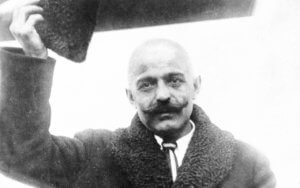
Gurdjieff. “Disparu! Éteint!”
An Excerpt from Gurdjieff Reconsidered
I make a point of visiting her bookstore, the ideal Parisian bookstore if you care for old editions, rarities, surprises. Widow of a well-respected poet, she presides with touching goodwill over history and taste in the form of books, thousands of books, shelves and stacks of books and journals. A relaxing, joyful place—a place of memory. One day I asked how she would respond were I to say just one word: Gurdjieff. “Disparu! Éteint!” she replied, as if tamping down a lid. “Vanished! Extinguished!” She hadn’t heard anything about him in years. The last sign of life she could recall was in the late 1970s when the director Peter Brook’s film version of Gurdjieff’s autobiography, Meetings with Remarkable Men, had attracted interest among thoughtful people. It was an essential outing to see the much-discussed film. But that died away, she said, and the rest was silence. She was surprised when I told her that there is a flourishing though largely unpublicized Institut G.I. Gurdjieff in Paris, linked to similar foundations and societies nearly worldwide. Surprised but not interested. Gurdjieff and the teaching that bears his name are now all but sealed off from both mainstream history and current concern. There are too many things to care about in our immensely troubled world. Why would one care about Gurdjieff?
This book reconsiders that question as fully as possible, no stone unturned, no grain of sand unexamined for whatever small message may be inscribed on it. But what is a reconsideration? The word generally promises either the refinement of an existing reputation or a radical break from received opinion. The reconsideration in these pages has features of both types because two unlike views of Gurdjieff and his teaching have never mingled; they have glared at each other. We must look at them both. With meticulous respect for sources, I hope to redraw in part the portrait of Gurdjieff from decade to decade of his life in the West. If all goes well, that will be a refinement. I wish also to display, question, and break the received opinions on Gurdjieff, opinions that have revolved for many years around a small number of stereotypes and that find their way casually, as if there were nothing more to say, into review articles, biographies of other figures, and cultural commentaries. It is long past time for Gurdjieff and his teaching to be better understood. We trail him behind us rather than carry him forward.
Apart from Gurdjieff’s own writings, music, and choreography, which we will explore, there is an informed, attractive literature written by two generations of his students. Among many authors, I think at once of P. D. Ouspensky and of Thomas and Olga de Hartmann for the earlier years in Russia and the hard emigration to Western Europe; of Fritz Peters and Tcheslaw Tchekhovitch for the 1920s, when Gurdjieff was director of his institute near Fontainebleau; of Solita Solano, Kathryn Hulme, and Margaret Anderson for the 1930s, when Gurdjieff was living modestly in Paris and teaching only a few students; of René Zuber, Kenneth Walker, and J. G. and Elizabeth Bennett for the post-war 1940s, when American and British followers of Gurdjieff could at last rejoin the French whom Gurdjieff had regularly seen throughout the war and Nazi occupation. To those who found their way to him in those late years—he died in 1949—he offered unique experiences virtually on a daily basis. Whether they recognized it or not, they must have offered him the solace of knowing that his efforts since he had begun teaching in Russia, in 1912, might just flower in future generations. I should add that Paris was not the only locus of Gurdjieff’s activity; he made numerous trips to New York City and on occasion other American places, engaging the interest of Americans from the mid-1920s forward. They, in turn, wrote books when the time came to look back. There are, as well, several considerable biographies, and even a metabiography that seeks to correct perspectives and detail in prior biographies. Overall, there is a surprisingly large published literature in which Gurdjieff is central and revered, in addition to archival resources only now in part coming to light.
It is long past time for Gurdjieff and his teaching to be better understood.
In this mass of material there are countless anecdotes recording what Gurdjieff said or did at one moment or another. That will matter to us. As for Diogenes, the ancient Greek Cynic who was unmistakably one of Gurdjieff’s predecessors in attitude and teaching style, brief tales of things said or done have weight. Of Diogenes nothing but anecdotes survive, but we can know the man and still experience the pressure of his teaching through that alone. It is the same with Gurdjieff, and because at this time there are still living, direct students of Gurdjieff, and students of direct students, the informal library of anecdotes continues to grow. The meaning of some of these anecdotes or teaching tales is transparent—for example, Gurdjieff’s learned discussion of “onion soup without onions,” to which we’ll come in due course. Others are koan-like provocations that linger in one’s memory. Georgette Leblanc, the multitalented singer, actress, and companion of the playwright Maurice Maeterlinck, who came later in life to Gurdjieff’s table, once said to him, “I am almost frightened. Life rises in me like the ocean.” And he to her, “It is only a very small beginning.”
Many of those who worked with Gurdjieff have said that he was unknowable, an enigma. In case we were to miss the point, a surprising number of book titles start there—René Zuber’s Who Are You, Mr. Gurdjieff?, Margaret Anderson’s The Unknowable Gurdjieff, J. G. Bennett’s Gurdjieff: A Very Great Enigma. The most recently published account from a participant in Gurdjieff’s late years says as much: “I agreed with many others . . . in admitting that no one truly knew Mr. Gurdjieff. One can describe . . . events, anecdotes lived in his company, but the wholeness of his person remains impossible to grasp.” Yet the author of these words, François Grunwald, a psychiatrist with unimaginably keen skill in characterization, did offer something of a portrait based on his first encounter with Gurdjieff in the later 1940s: “His great black eyes, extraordinary in expression, questioned me. . . . I’ll try to depict those indescribable eyes: they revealed a serenity from which radiated intense affliction, a sort of sacred sadness, and at the same time ironic malice. One might perceive something altogether different in his eyes, although the deep suffering which so many sensed never waned.” In the course of these pages, others who knew Gurdjieff will have the same opportunity to evoke him. At some level he may remain unknowable, but like a mosaic of small photographs of a distant planet, their composite impressions cannot help but sum to a portrait.
What of the other view and literature, the one that rejects Gurdjieff and his teaching with mockery, violent righteousness, or disdain? I was struck again by its longevity, its apparent eternity, when not long ago I was innocently reading a tribute in the Financial Times, written by a highly respected British scholar of late classical and early Christian history, who happens to have a second expertise and love of fine gardening and landscape design. The article concerned a palatial garden in Turin, designed by the late Russell Page, a Briton who was a dominant influence on garden style in Great Britain, on the continent and, toward the end of his career, in the United States. Page’s book, The Education of a Gardener, is universally admired. Imagine my surprise to find, in the midst of the professor’s pastoral tribute, a bilious swerve toward Gurdjieff and his teaching.
Few of his fans now realize that Page’s landscaping related to an underlying faith. After moving to Paris he became a keen follower of the cuckoo teachings and mystic baloney of that Greek-Armenian exile from Russia, George Gurdjieff, and his assistant P. D. Ouspensky. He even married Gurdjieff’s daughter at the maestro’s request. Gurdjieff’s teachings on harmonious dancing, on healing by physical adversity and cosmic rays were stupendous nonsense, but were powerfully presented by his seductive gaze. Their stress on a hidden harmony in the universe appealed especially to Page the landscape gardener.
The assault concludes by calling Page’s views “wondrous nonsense.” The professor’s language is vastly disproportionate, nearly punitive, as if Russell Page had violated an inviolable code. The professor’s comments are wrath with no basis in knowledge. What he writes of Gurdjieff’s teaching is designed to ridicule; I scarcely recognize the teaching as he dismissively describes it—some combination of stardust, sweat, and suggestibility. What he writes of Gurdjieff himself is caricature based on a decades-old tradition of caricature passed from author to author, reviewer to reviewer, without a glance at Gurdjieff himself. Misrepresentations of this kind became something of a parlor sport, a free zone where critics could outdo one another’s scorn and condescension without fear of correction. Who was on duty, so to speak, to make the correction? The Gurdjieff teaching had long since largely abandoned public space and debate; it had its own concerns. Yet questions remain: Why is the reception of Gurdjieff and his teaching, particularly among some intellectuals—and in this instance one of earned fame—so lastingly sour? And why is Gurdjieff by and large forgotten? The questions are thoroughly explored in later pages and touched on here.
I know of Russell Page in an altogether different light. There is a striking photograph of him with Gurdjieff during a late “car trip”—Gurdjieff often assembled small caravans of students and family to visit places of interest in France. An immensely tall man, Page stands near Gurdjieff during a break in travel; obviously at ease, they clearly know each other well. Page seems to have known how to engage Gurdjieff playfully. For example, at table in the late 1940s, “Gurdjieff said he must finish the arrangements because he wanted to go in a day or two to Tibet. ‘Tibet, Monsieur?’ said Page. ‘Or Dieppe?’ Mr. G. gave him a perfectly wicked and sly smile and said, ‘Either very expensive,’ as though apart from that the destination did not matter much.” There is another photograph: Russell Page as a pall bearer at Gurdjieff’s funeral, early November 1949.
Severe or casual dismissiveness among some intellectuals then and now has a number of roots, the earliest dating to the years 1923–1924. At that time, newly established in France, Gurdjieff invited public attention by receiving visitors, including journalists, at his Institute for the Harmonious Development of Man in Fontainebleau-Avon, roughly an hour from Paris by train or car. I’ll often refer to it as the Prieuré. The Institute’s new home was a spacious manor house, the Prieuré des Basses Loges, once a convent, later the home of a royal mistress, still later owned by the principal lawyer defending Captain Alfred Dreyfus in the years around 1900. Visitors to the Prieuré were hospitably received, some spoke with the founder (through a translator at that time), others prowled the extensive grounds and learned what they could, and many witnessed Saturday evening performances of the sacred dances, for which Gurdjieff became known when he brought the dances and his hardworking troupe to the public through theatrical performances in late 1923 (Paris) and the first months of 1924 (New York City and elsewhere in the United States).
At some level he may remain unknowable, but like a mosaic of small photographs of a distant planet, their composite impressions cannot help but sum to a portrait.
Both journalists and distinguished visitors could not miss an unassailable truth: a visit to the Institute was a visit elsewhere. Its values were different, its intentions and way of life differed, and Gurdjieff himself was other; he matched no norm. Indecipherable to the majority of casual visitors, he may well have been the first authentic guru in the modern West—but what was that? The word itself was scarcely known, let alone the function of that sort of teacher. Sacred dances? Many acknowledged that they were beautiful and the performers capable of intricate movement—but why didn’t they smile? Dancers are supposed to smile. And the Institute itself, with its novel and challenging printed statement of purpose—really? Is such a school needed? Apart from obvious exceptions, aren’t adults adult, with completed identities, no fundamental reworking necessary? It was too much for most observers and, though there were exceptions, newspaper reports for the most part lurched toward entertaining distortion and condescension. Gurdjieff abandoned publicizing the Institute and his work in choreography. In later years he was typically abrupt with journalists; he wanted no part of them. Despite the mixed public reception in those early years, there were visitors who stayed, audience members who recognized in the dances and the dancers a new way of being.
The literature of rejection and disdain has another root in those years: the passage through one another’s lives of Katherine Mansfield, the now classic author, and Gurdjieff at the newly founded Institute. Chapter 4 looks more closely at this enduringly vivid and touching encounter, but something should be noted now. New Zealand-born, reaching out to and reaching London in 1908 to found her literary career, Mansfield quickly became “one of us”—friend (and sometime rival) of many in the literary elite, discovered and first published by Alfred R. Orage, editor of the leading literary journal of its time. Driven by superb powers of observation and a sharp wit, her short stories became part of the canon of twentieth-century literature. And she sickened. When she was diagnosed with tuberculosis in 1917, her life became a pilgrimage or flight from place to place, from healthy mountain air to doctors who offered some hope of a cure to quiet times in England and on the continent when she believed that all could again be well. Through her notebook for 1919 we can visit a key moment in these increasingly difficult years to hear something of her private sensibility, not yet fully revealed in her stories. Her words there will help us grasp why she found her way to Gurdjieff and the Institute in the last few months of her life: “Honesty . . . is the only thing one seems to prize beyond life, love, death, everything,” she wrote. “It alone remaineth. O those that come after me—will you believe it? At the end truth is the one thing worth having—it’s more thrilling than love, more joyful, & more passionate. It simply cannot fail. All else fails. I, at any rate, give the remainder of my life to it & it alone.”
She was drawn to the Institute because, there too, she was “one of us”—a participant by virtue of her longing for another quality of truth and experience, which she had glimpsed from time to time, and by virtue of her willingness to take herself in hand, to question herself. In the teaching cycle Gurdjieff had offered in Russia before the Revolution, he had introduced the idea of “magnetic center,” an innate capacity in some people to detect and move toward liberating truth, to look past the familiar. It is a raw, untutored capacity. Naturally it speaks the language of a given time and place, but it belongs to itself, finds its own way, answers to no one until satisfied that it has come home—however it understands “home.” Katherine Mansfield possessed such an inner compass.
Guided by Orage, who also became a resident at the Institute in its very first weeks of existence, October 1922, Mansfield left behind physical therapies that had done her no good and wished to rework her life in some new way that she understood the Institute to offer. “I am going to Fontainebleau next week to see Gurdjieff,” she wrote that month from Paris to her husband, John Middleton Murry. “Why am I going? From all I hear he is the only man who understands there is no division between the body and the spirit, who believes how they are related. You remember how I have always said doctors only treat half. And you have replied, ‘It’s up to you to do the rest’? It is. That’s true. But first I must learn how. I believe Gurdjieff can teach me.”
Mansfield came to the Prieuré on a two-week trial basis after being examined in Paris by a British doctor, one of the early residents, who confirmed to Gurdjieff that she was mortally ill with little time left. Gurdjieff understood the possible consequences of lengthening her stay, but Mansfield already had friends, among whom were the women Gurdjieff had assigned to make her life comfortable. The best account is from Tcheslaw Tchekhovitch, a mighty young man with a big heart—once a professional wrestler and circus strongman—who had accompanied Gurdjieff since meeting him in Constantinople. Tchekhovitch noticed one day that Katya (as he called her) was sad and, asking why, learned that Gurdjieff had suggested she would be better off in a sanatorium. Tchekhovitch took matters in hand: “A strange determination came over me on her behalf: not to give up, not to lose hope. I could not believe Gyorgi Ivanovich would refuse to let her stay at the Prieuré if she expressed her wish sincerely, from the depths of her being. Gently, I spoke my mind. ‘You know as well as I that Gyorgi Ivanovich is a good man. He won’t refuse, if you speak to him frankly.’ Then, wanting to provide her with a request he could not turn down, I added, ‘Don’t just ask to stay. Tell him it’s the only way for you to find true happiness.’” No doubt she put her question effectively and found allies in three women who were “not easily put off.” Tchekhovitch continued, “‘Gyorgi Ivanovich, people have already said plenty of scandalous things about you, so one more isn’t going to make much difference! We’ll share that burden with you.’ ‘All right, then,’ he said, looking at them intently. ‘So be it. We’ll all bear it together!’”
He is the only man who understands there is no division between the body and the spirit, who believes how they are related.
As Gurdjieff must have known, it was not a burden that could be shared. He alone would face opprobrium, were their Katya to die at the Prieuré. Out of sheer kindness he permitted her to stay. Letters to her husband and a conversation with Orage, later recorded by him, as well as a conversation with P. D. Ouspensky, bear witness to the joyous weeks of discovery and self-discovery, of comfort and fellowship, she experienced. No witness of the life of the Prieuré has left a more sensitive and vivid record—to be explored in chapter 4. She died suddenly on January 9, 1923; her grave in the local Avon cemetery is a few yards from the Gurdjieff family plot.
And because she was “one of us” in England, and soon enthusiastically read in French translation, anger and blame descended—as virtually everyone who cared for Gurdjieff and the Institute had anticipated. It was as if Gurdjieff had irresponsibly deprived English letters of a treasured person. Rejection and disdain had characterized much of British opinion even in advance of Mansfield’s death—newspaper reports and word-of-mouth were marching on, and the inexplicable departure to the Prieuré of A. R. Orage, such a central figure in English letters, was alarming. James Moore, author of Gurdjieff and Mansfield, makes the relevant inventory. Wyndham Lewis described Mansfield as “in the grip of the Levantine psychic shark.” D. H. Lawrence qualified the Institute as a “rotten place.” During Mansfield’s few months at the Prieuré, Vivian Eliot, the poet’s wife, reported of an acquaintance that “she is now in that asylum for the insane called La [sic] Prieuré where she does religious dances naked with Katherine Mansfield.” François Mauriac, a notable Catholic author and eventually a member of the Académie française and Nobel laureate, wrote many years after Mansfield’s death that “in the end it was to Gurdjieff, the mage, that she gave her faith, at the phalanstery of Fontainebleau, where she went to die in misery.” He was reviewing in 1959 the newly published French translation of the first comprehensive biography of Mansfield.
Particularly in France, the stain of Mansfield’s death on Gurdjieff’s reputation prevailed for decades. Conversation with the English scholar Gerri Kimber, author of a marvelous history of Mansfield’s reputation in France, led to the oddest of findings: there were two stacks of received opinion from which French intellectuals drew for decades after Mansfield’s death. In the first stack, Mansfield was depicted as an angel, a supremely refined, loving intelligence briefly cast into our world and sadly snatched away. In the second stack, Gurdjieff was depicted as a devil, an untrustworthy exploiter. Neither received opinion required further thought. The Mansfield myth survived until a series of thorough biographies, from 1953 forward, offered a much more nuanced truth: she too had her struggles and lapses, not only where health was concerned. The Gurdjieff myth should have long since been put to rest: after 1950, anyone who cared to have unprejudiced knowledge of him could easily find a growing number of accurate sources.
Enough for now about reputation. Later chapters will return to the topic: another generation of French authors did what they could, with some success, to eliminate Gurdjieff as a figure worth serious consideration, and several authors in the English-speaking world, approaching with sharpened axes, did what they could to exclude both him and his teaching from the known world. For now, no matter—they’ll have their say later when we look at the years just after Gurdjieff’s passing. We should begin thinking about what Gurdjieff and his teaching represented. He may be unknowable but, all the same, are there no mirrors we can hold up to catch light?
Share
Related Books


